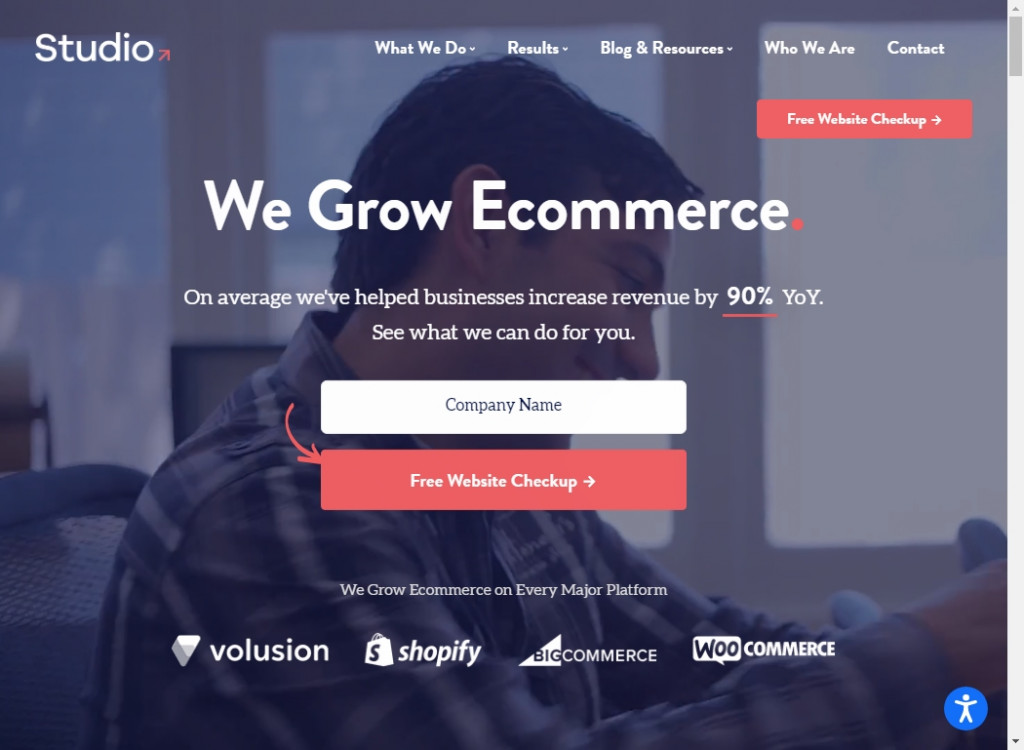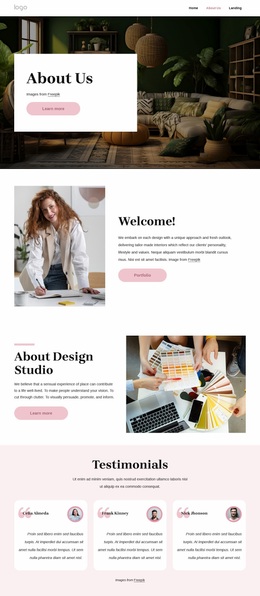The Importance of Mobile-Friendly Website Design
The Importance of Mobile-Friendly Website Design
Blog Article
The Ultimate Guide to Modern Site Layout Trends
In the ever-evolving electronic landscape, contemporary site style patterns play an important role in forming individual experience and involvement. From the surge of minimalist layout concepts that focus on simpleness to the influence of vibrant typography in defining brand identity, each element adds to a cohesive on-line presence.
Minimalist Design Concepts
Minimalist style principles emphasize the concept that less is much more, supporting for simplicity and functionality in aesthetic communication. This method strips away unnecessary components, concentrating instead on crucial components that communicate the designated message successfully. By focusing on quality, minimal layout boosts individual experience, enabling visitors to navigate websites easily.
Core tenets of minimal layout include using ample white area, which develops a sense of equilibrium and organization. This unfavorable area not just directs the customer's interest to essential components yet likewise fosters a calming aesthetic atmosphere. Additionally, a minimal color scheme is frequently used, making use of monochromatic schemes or soft tones to maintain visual communication and protect against overwhelming the individual.
Typography plays an essential role in minimalist design, where legible font styles are chosen for their simpleness and performance in interacting material. Eventually, minimal design principles cultivate a focused environment that encourages customers to involve with the content, boosting the general efficiency of contemporary web site style.
Strong Typography Choices
Accepting bold typography choices has actually ended up being a specifying characteristic of modern site design, as it successfully records attention and communicates strong messaging. Designers are increasingly making use of typography not simply as a functional element but as a crucial aesthetic component that boosts the total visual and individual experience.

Moreover, the juxtaposition of vibrant typography with minimalist layout concepts permits striking contrasts, improving readability while preserving visual appeal. Using whitespace around bold message further highlights its significance, making certain that the message reverberates with the target market.
As electronic landscapes become more affordable, leveraging strong typography enables brands to separate themselves and leave an enduring impact. The cautious option of typefaces and their application can evoke feelings, establish tone, and drive action, making strong typography an indispensable tool in modern-day website design. Inevitably, it is an effective method to improve storytelling and ensure that vital messages are not just seen but likewise really felt.
Mobile-first and receptive Layout
Mobile-first and responsive style has arised as an important principle in modern website growth, reflecting the increasing dependence on mobile gadgets for accessing on the internet web content. As user actions changes towards mobile surfing, developers have to prioritize developing experiences that adapt seamlessly across various display sizes and resolutions.
A responsive style ensures that a web site immediately adjusts its layout, photos, and performance based upon the device being used. This method improves customer experience by providing constant navigation and readability, regardless of whether the site visitor gets on a tablet, smart device, or desktop computer. Moreover, mobile-first style supporters for developing internet sites initially for smaller screens, ultimately scaling Learn More Here as much as bigger display screens. This approach encourages a much more effective and streamlined style procedure, concentrating on crucial content and performance first.
Implementing mobile-first and responsive principles not just satisfies user choices yet additionally straightens with search engine optimization (SEO) methods. Major online search engine, like Google, focus on mobile-friendly websites in their rankings, making it imperative for companies to adopt these layout approaches. In an affordable electronic landscape, accepting mobile-first and receptive layout is not simply an option; it is necessary for making certain accessibility and interaction with a varied audience.
Engaging Microinteractions
Microinteractions play an essential duty in boosting individual engagement and general internet site experience, specifically in the context of mobile-first and receptive design. These refined layout components provide instant comments to customers, making interactions a lot more instinctive and enjoyable. Examples include switch animations, notice notifies, and packing indicators, which not only overview customers but additionally create a sense of link with the interface.
Incorporating interesting microinteractions can considerably enhance use by decreasing cognitive tons. When users receive acoustic or visual responses upon doing activities, such as clicking a switch or submitting a kind, they really feel extra certain in their choices. This cultivates a smoother navigation experience, inevitably increasing customer retention.

As website design patterns proceed to develop, the importance of microinteractions can not be overstated. They act as the refined yet powerful touchpoints that change common communications right into extraordinary experiences, thus raising the overall efficiency of modern web style.
Lasting Website Design Practices
Lasting website design techniques are ending up being significantly necessary as the digital landscape expands and ecological concerns rise. Programmers and developers are identifying their duty to develop websites that not only serve customer needs however also lessen ecological effect. This approach includes a he said number of essential methods.
First of all, maximizing energy usage is vital. Web sites must be developed to load rapidly and successfully, which lowers server energy usage and enhances user experience. Strategies such as image compression, decreasing More hints HTTP requests, and using contemporary coding techniques contribute significantly to this objective.
Secondly, picking environment-friendly holding providers is vital - website design. Many hosting firms are now powered by eco-friendly power sources, allowing internet sites to operate in a more sustainable way. This option reflects a commitment to minimizing carbon impacts
In addition, embracing a minimal design can improve sustainability. Less aspects on a page bring about less data transfer, which not just accelerates filling times however also saves sources.
Lastly, advertising digital access ensures that sites reach a larger audience without unneeded bloat, lining up individual experience with environmental responsibility. By incorporating these lasting practices, web developers can contribute positively to both individual interaction and the earth's well-being.
Verdict
In summary, contemporary internet site style trends stress the assimilation of minimalist principles, vibrant typography, and receptive layout to boost customer experience. Taking on these trends is essential for producing impactful digital experiences that resonate with individuals in a significantly competitive online landscape.
In the ever-evolving electronic landscape, modern web site style patterns play a vital duty in shaping individual experience and involvement. By prioritizing clarity, minimal design improves individual experience, permitting visitors to browse web sites easily.
Eventually, minimal design principles cultivate a concentrated environment that encourages individuals to involve with the material, improving the general effectiveness of modern-day internet site style.Microinteractions play a crucial role in boosting individual engagement and total web site experience, especially in the context of receptive and mobile-first layout.In recap, modern site design fads emphasize the assimilation of minimalist principles, strong typography, and receptive design to boost customer experience.
Report this page